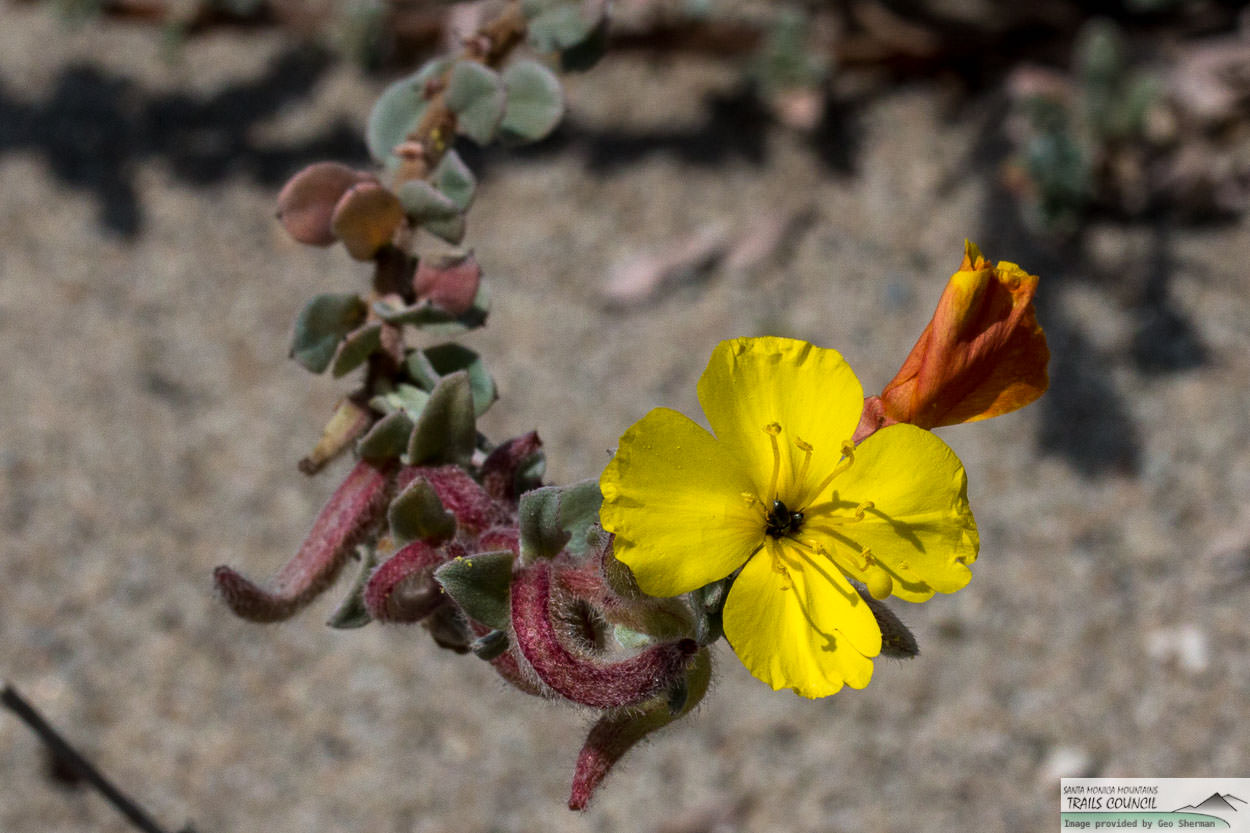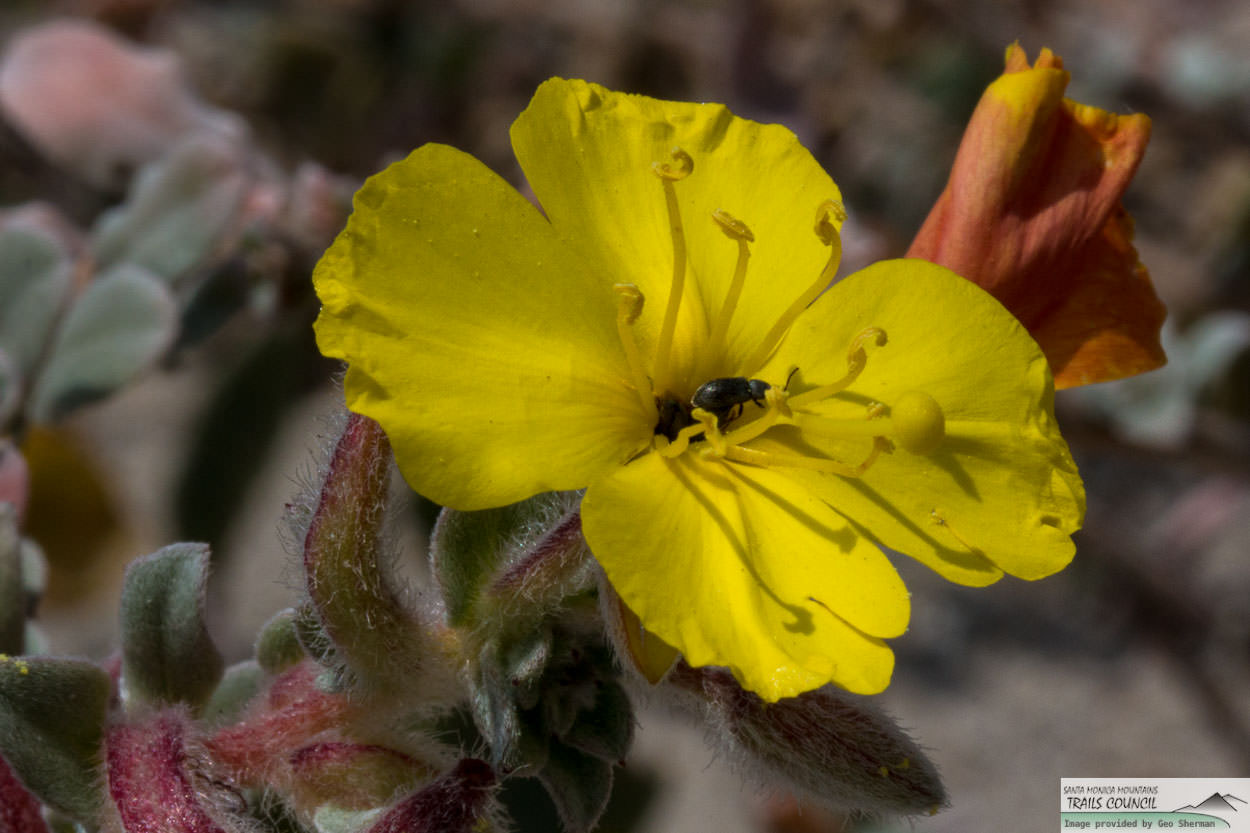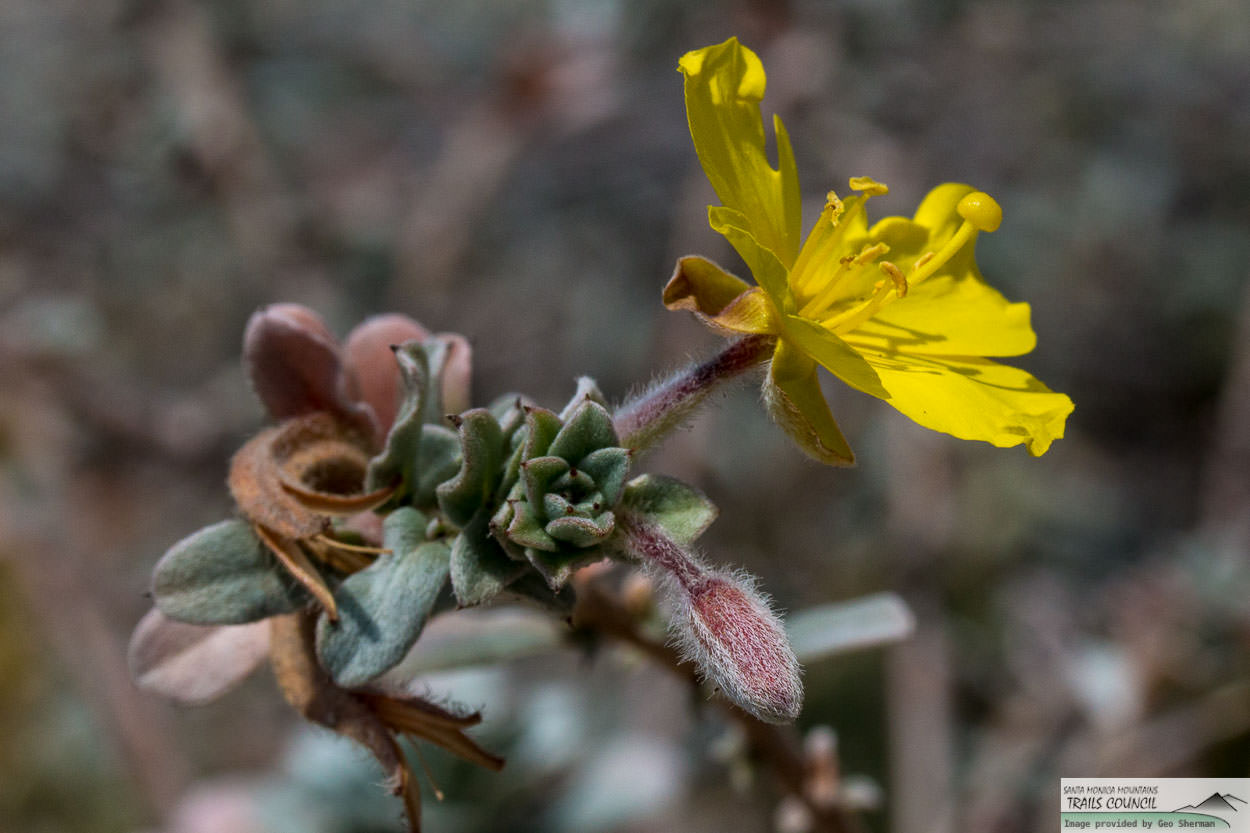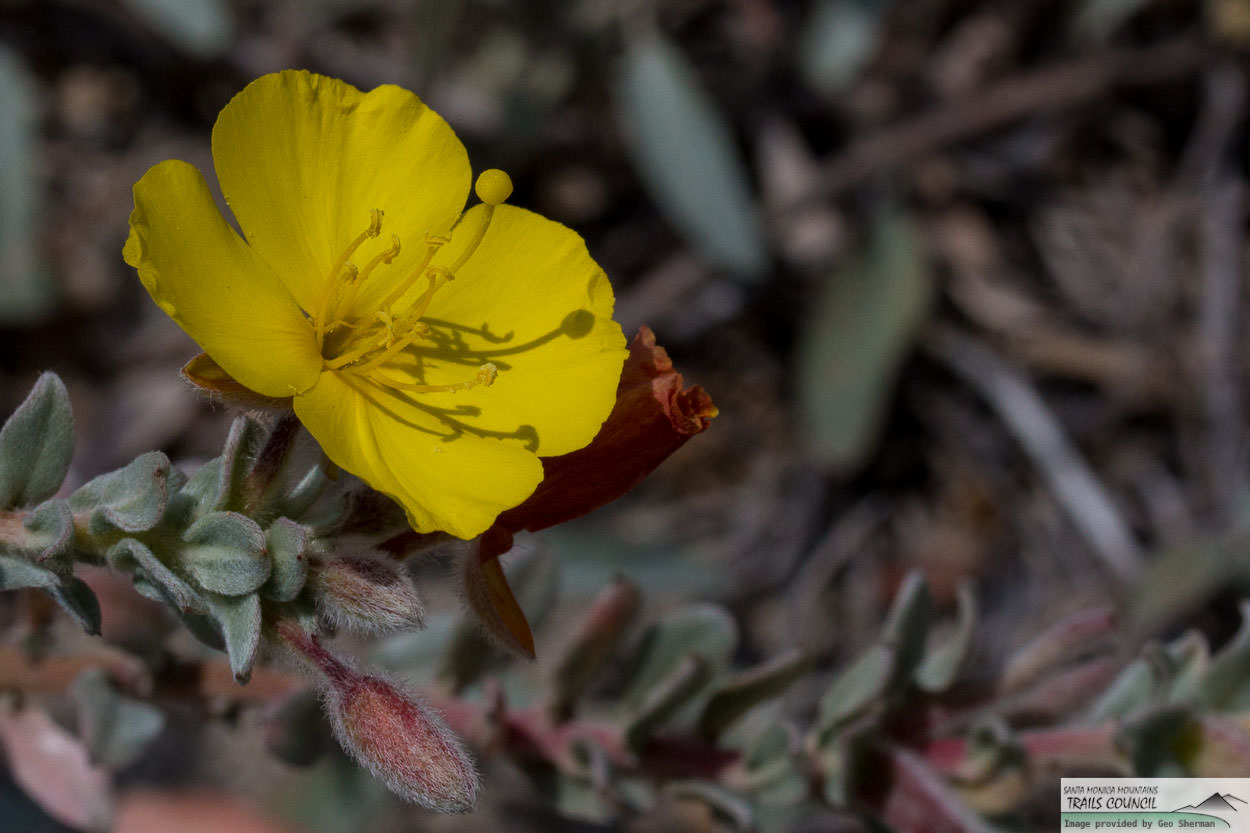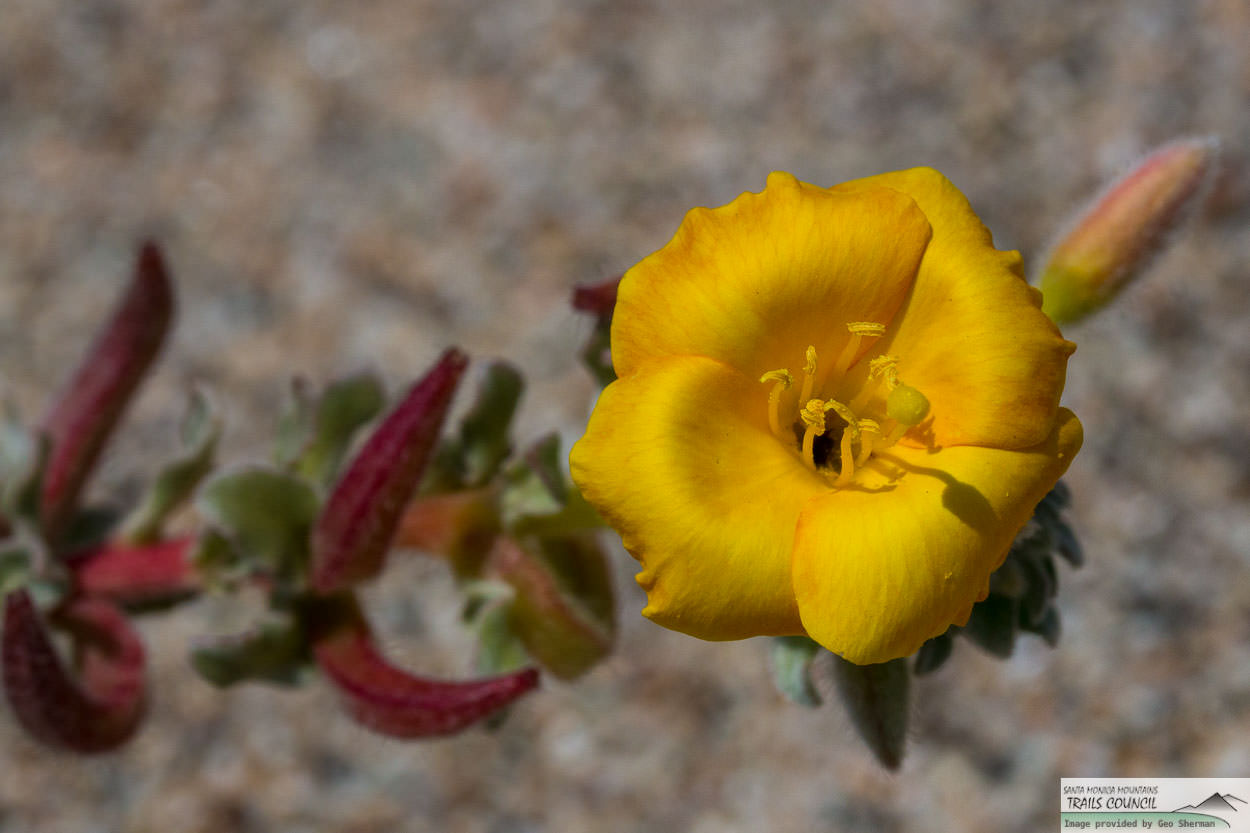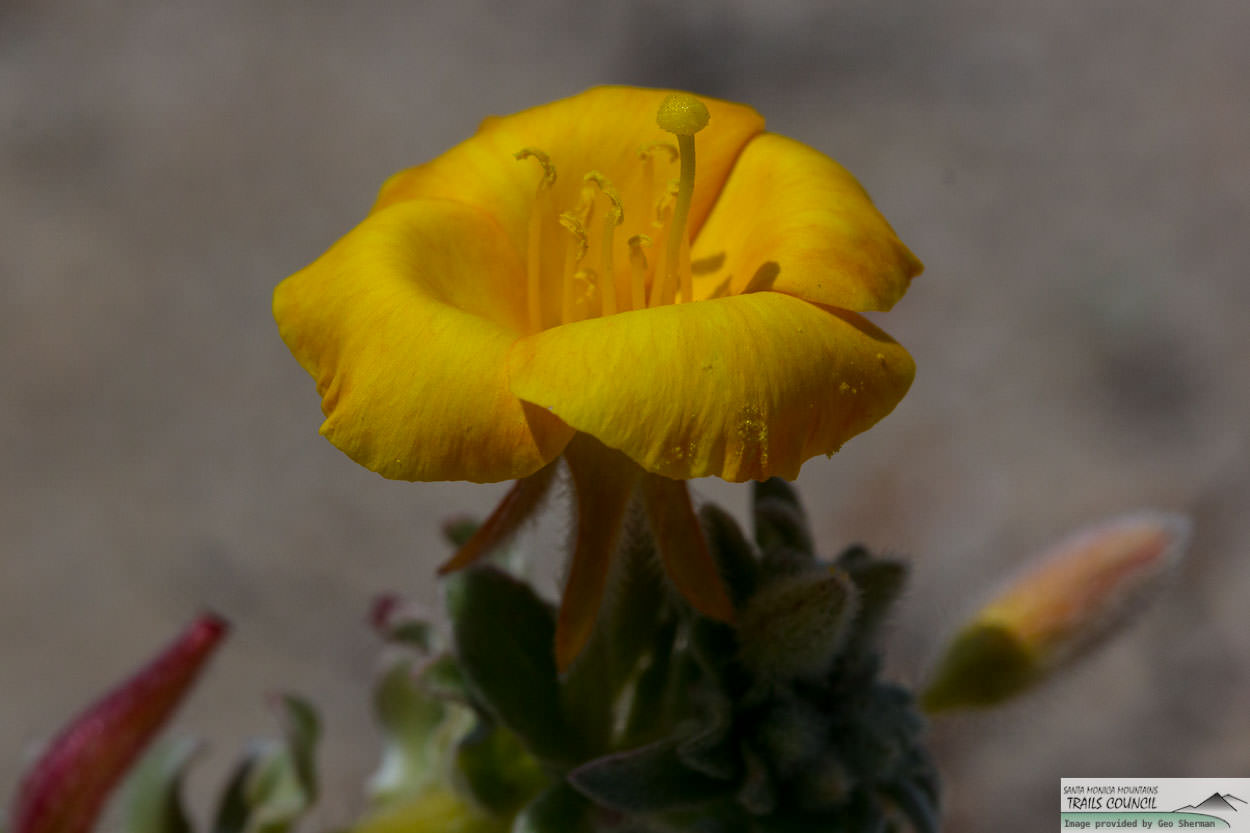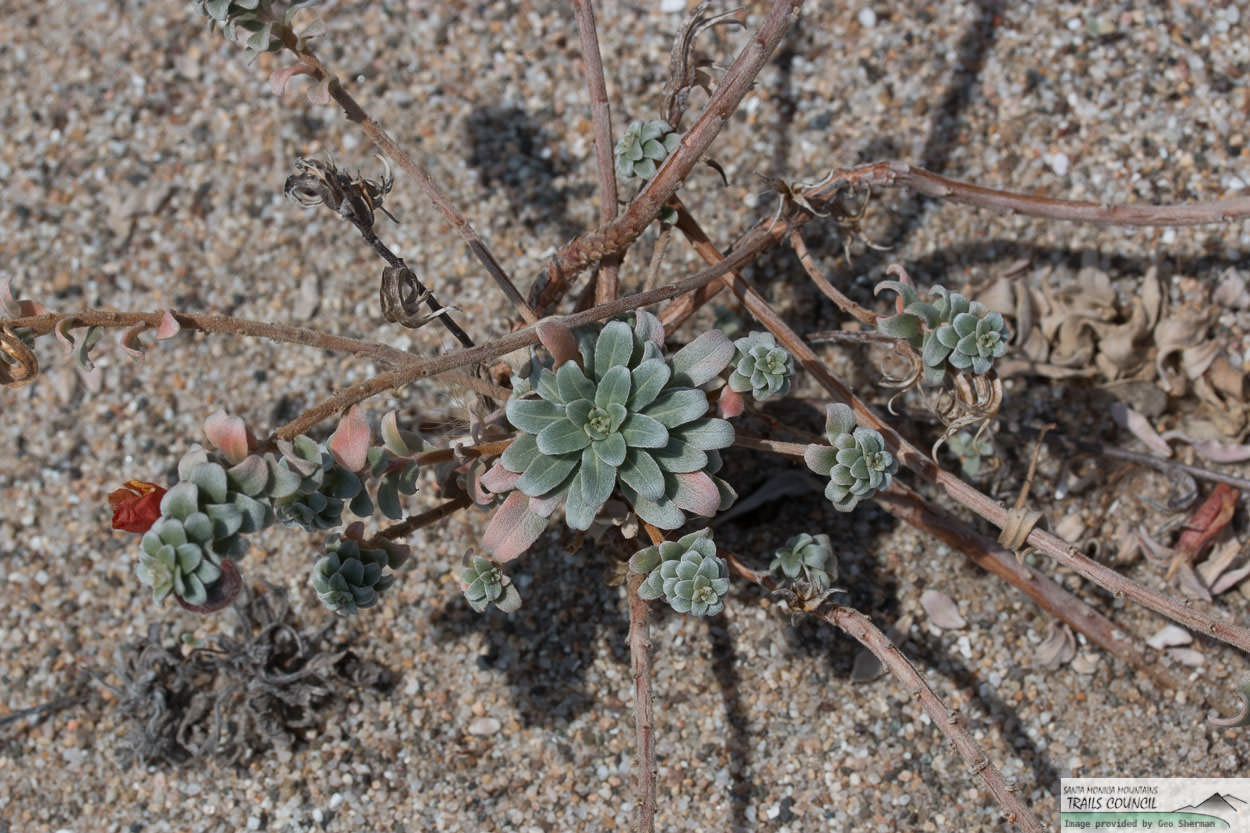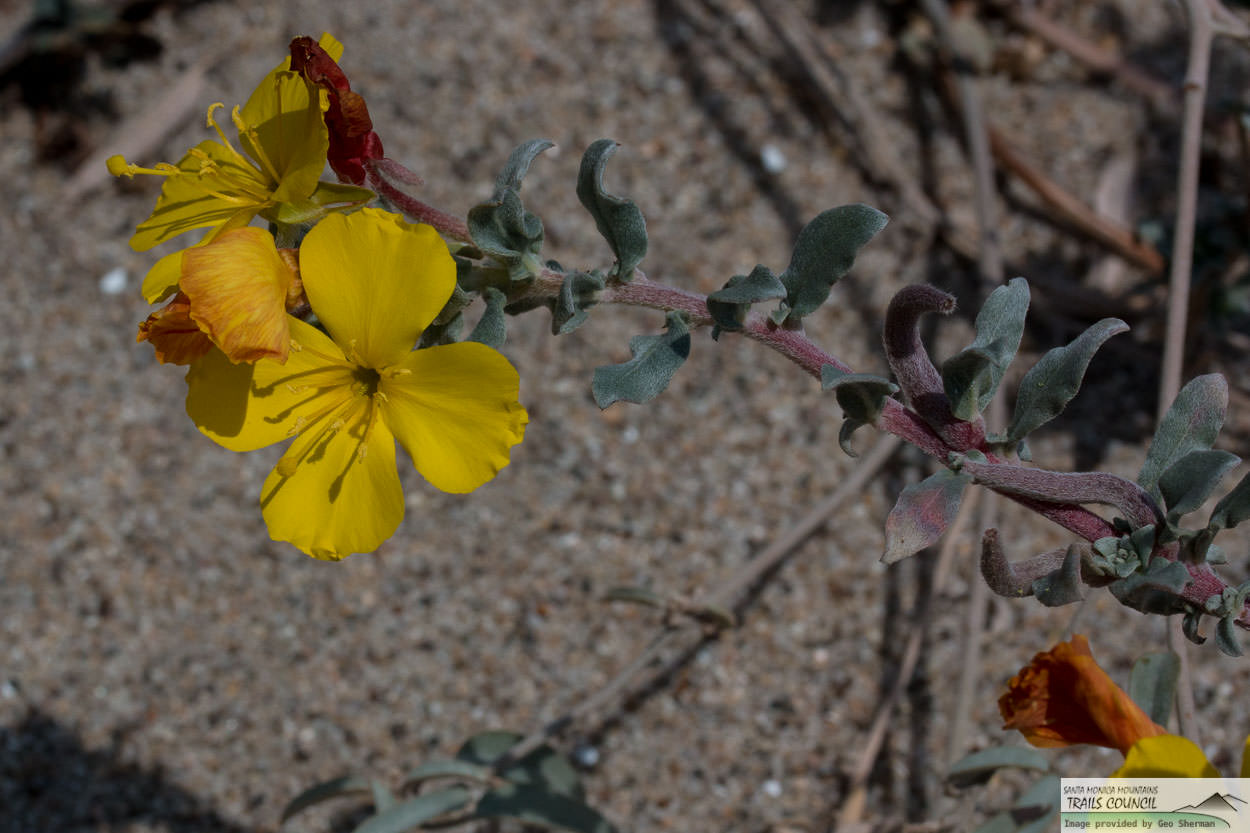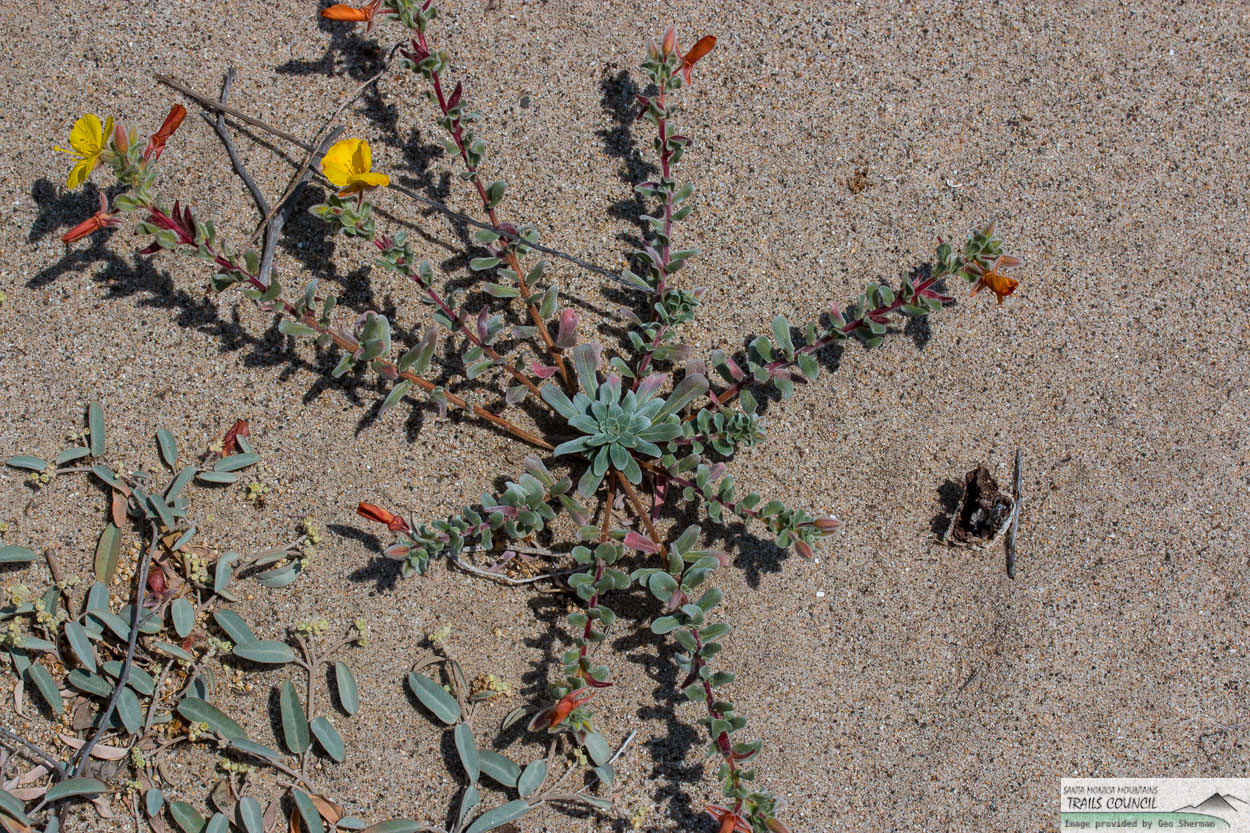Beach Evening Primrose
- Camissoniopsis cheiranthifolia
| Common Name(s): | Beach Evening Primrose |
| Scientific Name: | Camissoniopsis cheiranthifolia |
| Family: | Onagraceae (Evening Primrose) |
| Plant Type: | Perennial |
| Size: | wider than tall - 12 inch |
| Habitat: | Coastal Strand |
| Blooms: | March to July |
| Fire Response: | Stump Sprout or Seed |
Beach Evening Primrose Camissoniopsis cheiranthifolia (beach suncup or beach evening primrose) is a member of the evening primrose family that is native to dunes and sandy soils of coastal California and Oregon. These can easily be found along the inland side of the beaches in Santa Monica Mountain National Recreation Area between Sycamore and La Jolla Canyons. If you look through the archive you will find several other Evening Primrose flowers....
The Beach Evening Primrose grows prostrate (spreads out rather than up) along the beach surface, forming mats more than 36 inches in width. Long stems grow from the center. Silvery grey-green leaves with fine hairs that reflect the sun away are alternate, smooth-margined, the crown of the plant has oblanceolate leaves that are thick and form a rosette. Upper leaves are shorter and wider, ovate and clasp the stalk. By growing low to the ground with flexible swinging stems and having a deep taproot, this plant is able do well on the ever shifting sands of the dune environment.
The three quarters of an inch bright yellow, four-petalled flowers open in the morning (typical among suncups). Flowers fade to red /orange as the flower ages. A dense covering of pale hairs protects this plant from the hot summer sun. There are eight stamens and the stigma is classifed as capitate (ending in a distinct compact head). Terms describing this plant: Native, Yellow, Medium, Large, Clusters, Solitary, Simple, Herbaceous, Perennial, Early Spring, Late Spring.
Link to Calflora.net - the best source of this fascinating information
Name Origin:
Camissoniop'sis: from the generic name Camissonia and the Greek opsis, "aspect, view, appearance," thus meaning "having the appearance of Camissonia" cheiranthifo'lia: having leaves like that of Cheiranthus, an old name for a wallflower now renamed (ref. Camissoniopsis cheiranthifolia ssp. suffruticosa)
Contributed by George Sherman
Featured Plants in the Onagraceae (Evening Primrose) Family:

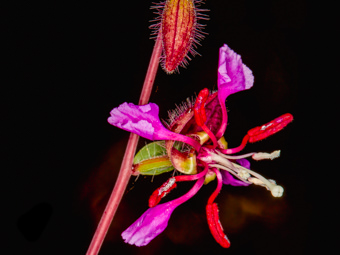
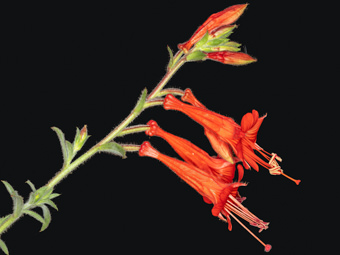
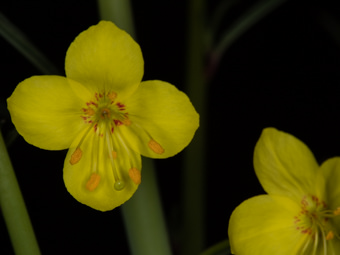
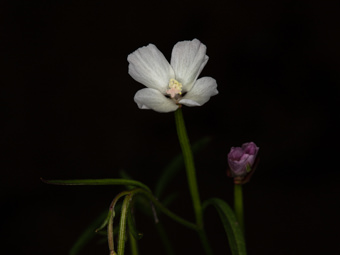
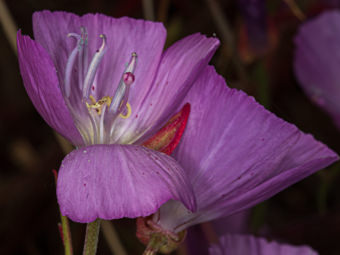

Last modified: August 21 2024 15:18:58.
Number of Images: 13
Image Size Total: 5,492,274
References:
Wildflowers of the Santa Monica Mountains, by Milt McAuleyFlowering Plants: The Santa Monica Mountains, Coastal and Chaparral Regions of Southern California, by Nancy Dale
Chumash Ethnobotany: Plant Knowledge Among the Chumash People, by Jan Timbrook
Leaf Shapes Primer - Botanical Terms for Leaves: - Link

